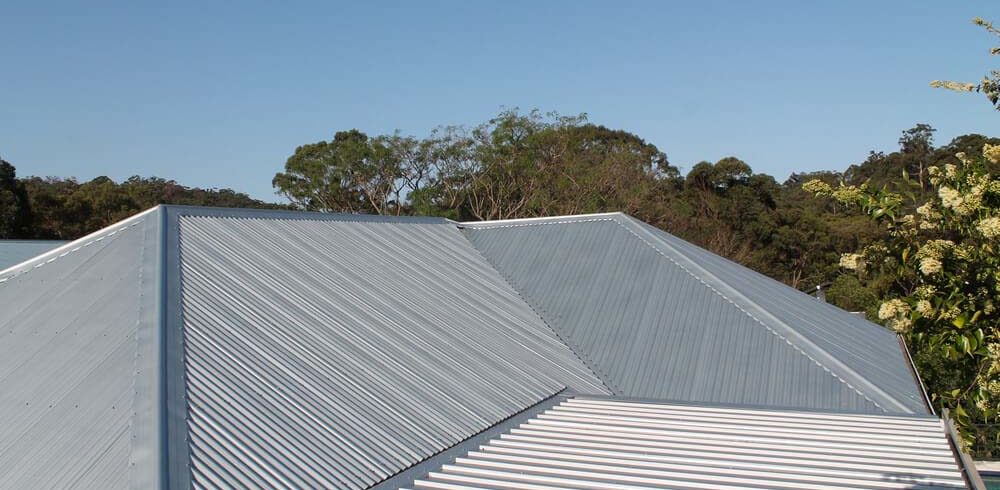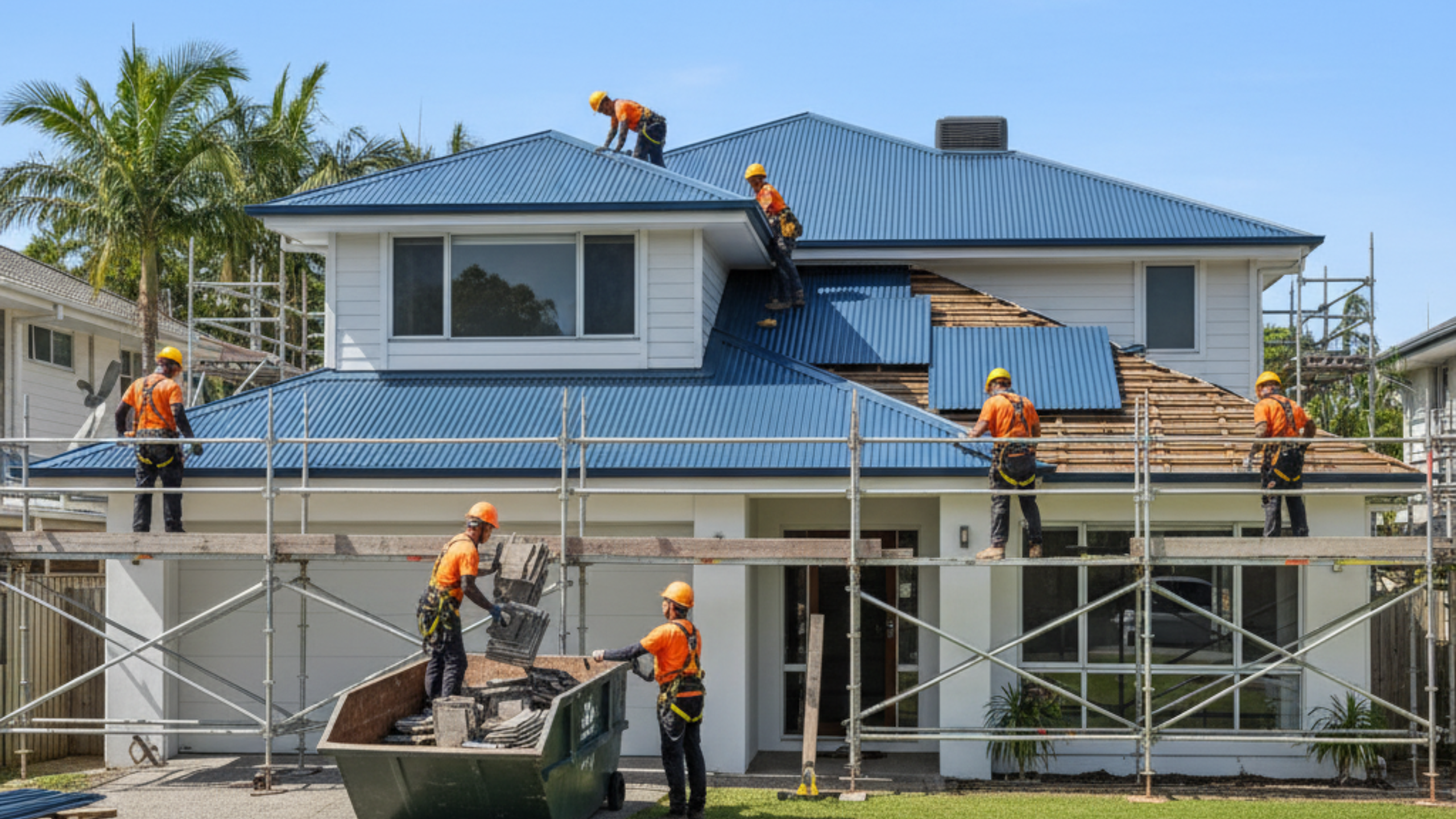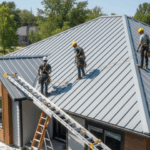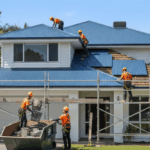Your guttering system may not be the most glamorous part of your home, but when it fails, the damage can be extensive and expensive. Whether you’re a new homeowner or someone who’s been living in the same place for years, understanding how your gutters work—and how they should work—can prevent serious issues like foundation cracks, roof leaks, and water damage.
At ZEN Roofing, we’ve seen firsthand how small guttering mistakes can lead to big problems. In this post, we’ll break down the most common guttering errors homeowners make and how you can avoid them.
Neglecting Regular Cleaning: The Silent Gutter Killer
The number one mistake homeowners make is failing to clean their gutters. Leaves, twigs, and other debris quickly build up, especially during fall and stormy seasons. When gutters are clogged, water can’t flow freely and ends up spilling over the edges. This overflow can damage fascia boards, siding, and even seep into your basement.
The fix? Clean your gutters at least twice a year—more if you live near trees. A good habit is to check them after major storms or heavy winds. Hiring a professional service like ZEN Roofing ensures the job is done safely and thoroughly, especially for multi-story homes.
Improper Gutter Pitch: The Invisible Drainage Disaster
Gutters need to be slightly pitched so water flows toward the downspouts. If the slope is too shallow or uneven, water will pool in the gutters, leading to rust, sagging, and leaks over time. Conversely, if the pitch is too steep, water moves too quickly, potentially splashing over the sides.
Proper installation includes checking the slope with a level—ideally a quarter inch drop for every 10 feet of gutter. If you’re unsure, an inspection by gutter specialists can reveal pitch issues and correct them before further damage occurs.
Choosing the Wrong Gutter Size for Your Home
A common oversight is installing gutters that are too small for the volume of water your roof sheds. Standard five-inch gutters may work for smaller homes, but larger or steeper roofs need six-inch gutters or even custom solutions.
Gutter sizing depends on local rainfall patterns, roof pitch, and surface area. Undersized gutters can overflow during heavy rain, defeating their purpose entirely. ZEN Roofing offers consultations to determine the right size and style for your home, ensuring optimal performance and protection.
Poor Downspout Placement That Floods Your Foundation
Downspouts direct water away from your home’s base. Placing them too close to the foundation—or worse, without an extension—can cause water to pool around the perimeter. This is one of the leading causes of basement leaks and soil erosion.
Ideally, downspouts should discharge at least 4–6 feet away from the house. Using splash blocks or buried drainage pipes can help redirect water even further. If you’re noticing puddles near your foundation, it’s time to reevaluate your downspout layout.
DIY Gutter Installation Gone Wrong
There’s a lot to be said for DIY projects, but gutter installation requires precision. Common do-it-yourself mistakes include incorrect slope, insecure brackets, and improper sealing of joints. These errors not only reduce the gutter’s effectiveness but can also void manufacturer warranties.
While installing gutters might seem like a weekend job, it’s worth investing in professional gutter installation. ZEN Roofing’s certified installers make sure everything is aligned, sealed, and draining as it should—giving you peace of mind for years to come.
Ignoring Gutter Leaks and Sagging Sections
Spotting a drip during a rainstorm or a sagging section of gutter? It might seem like a small problem, but those symptoms usually indicate failing fasteners, damaged seams, or rusted-through sections.
Leaky gutters can ruin fascia boards and even allow water to enter the roof deck, causing mold and rot. Don’t wait—inspect your gutters periodically and repair issues as soon as they arise. Catching problems early means avoiding costly structural repairs later on.
Using Low-Quality Materials That Can’t Withstand the Weather
Cheap vinyl gutters might look fine at first, but they often crack in cold weather or warp under direct sun. Aluminum and galvanized steel are better options, especially if you live in areas with extreme temperature changes or frequent storms.
Durability matters. Investing in higher-quality materials ensures your gutter system lasts longer and performs reliably. At ZEN Roofing, we always recommend materials based on your region’s climate and your home’s specific needs.
Skipping Gutter Guards: An Open Invitation to Debris
While gutter guards aren’t a cure-all, they significantly reduce the amount of debris that enters your gutters. Mesh screens, reverse-curve systems, and foam inserts all help prevent clogs, saving you from frequent cleanings.
The key is choosing the right type for your roof and gutter system. Not all guards are created equal, and improper installation can do more harm than good. A professional assessment can help you decide whether guards are worth the investment for your home.
Not Inspecting Gutters After Storms and Seasons
Heavy rain, snow, and wind can wreak havoc on your gutters. Brackets loosen, downspouts detach, and gutters can even pull away from the roofline altogether. But many homeowners don’t check for damage until water intrusion is already happening.
After any major weather event, inspect your gutters for visible issues. Look for loose hangers, disconnected sections, or overflowing downspouts. Regular seasonal inspections will catch problems before they evolve into emergencies.
Overlooking the Connection Between Gutters and Roof Health
Your gutter system and your roof work together to protect your home. When gutters fail, water backs up onto the roof, under shingles, and into the attic. This leads to mildew, rot, and even structural deterioration.
Properly functioning gutters extend the life of your roof by keeping moisture where it belongs—away from your home. Maintaining both systems is essential to long-term protection, and it’s one of the many reasons homeowners turn to experts like ZEN Roofing for comprehensive solutions.
Conclusion
Gutters are one of those features you don’t think about—until they fail. But with regular maintenance, smart design, and quality materials, you can avoid the most common guttering mistakes and keep your home safe from water damage.
If you’re unsure about the condition of your gutters, or you’re ready to upgrade to a more durable and efficient system, contact ZEN Roofing. Our team of experienced professionals will inspect, install, or repair your guttering with precision and care. Don’t let small issues turn into costly problems—take action today and protect your investment for the long haul.









